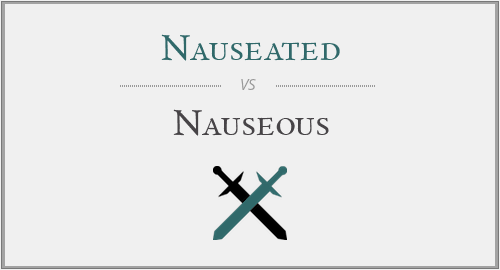Nauseated vs. Nauseous: Navigating Descriptions of Feeling Unwell
Choosing between "nauseated" and "nauseous" can be a matter of precision when describing feelings of discomfort. This article aims to clarify the distinctions between "nauseated" and "nauseous," shedding light on their meanings, applications, and appropriate usage in various contexts.
Correct Usage:
Nauseated:
"Nauseated" is an adjective used to describe the state of feeling queasy, sick, or experiencing the urge to vomit. It refers to the individual who is affected by nausea and is commonly used to express a personal feeling of discomfort.
Nauseous:
"Nauseous" is an adjective used to describe something that induces nausea or sickness in others. It refers to the external source or factor causing discomfort, rather than the personal experience of feeling unwell.
Meanings and Applications:
Nauseated:
Use "nauseated" when expressing your own feelings of queasiness, sickness, or the urge to vomit. It describes the state of being affected by nausea on a personal level.
Nauseous:
Use "nauseous" when describing something that has the potential to induce nausea or sickness in others. It refers to external factors or substances that may cause discomfort.

Examples:
Correct: After the roller coaster ride, she felt nauseated and needed a moment to recover.
Correct: The strong smell of the chemicals made him nauseous, prompting him to step outside for fresh air.
Contextual Considerations:
Consider the perspective and the nature of the discomfort when choosing between "nauseated" and "nauseous." If expressing personal feelings, use "nauseated." If describing external factors or substances, use "nauseous."
Conclusion:
Navigating the distinctions between "nauseated" and "nauseous" allows for precise communication and avoids confusion when describing feelings of discomfort. Whether expressing personal queasiness or identifying external sources of nausea, understanding the specific meanings of these terms enhances clarity and accuracy in expression.




Have a discussion about this article with the community:
Report Comment
We're doing our best to make sure our content is useful, accurate and safe.
If by any chance you spot an inappropriate comment while navigating through our website please use this form to let us know, and we'll take care of it shortly.
Attachment
You need to be logged in to favorite.
Log In